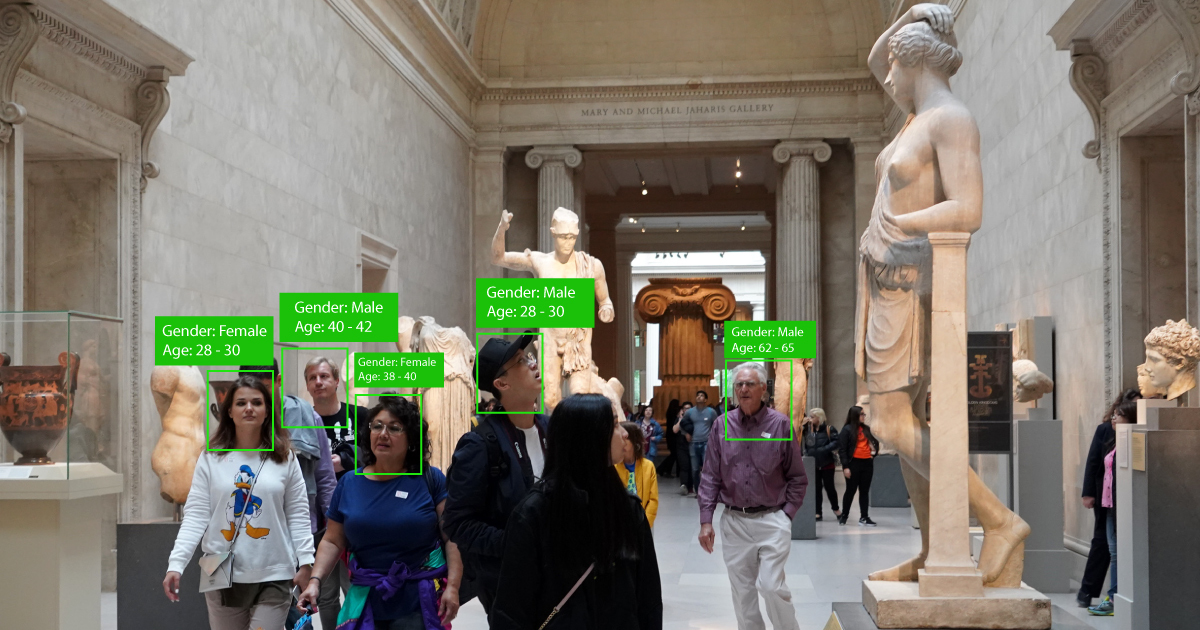Revolutionizing Museums with Video Analytics: Enhancing Experiences, Security, and Efficiency

Museums, repositories of history and cultural heritage, have long served as educational institutions and havens for artistic appreciation. As the world embraces the digital age, museums are actively transforming to cater to a more tech-savvy audience. One such transformative technology is video analytics, offering a multitude of advantages for both museum operations and the visitor experience.
Understanding Video Analytics:
Video analytics delves into the realm of extracting meaningful insights from video footage through automation. Companies like Staqu Technologies, with their AI-powered solution JARVIS, exemplify this approach. JARVIS utilizes artificial intelligence (AI) to meticulously analyze video data and provide actionable intelligence.
A Multifaceted Approach: Applications of Video Analytics in Museums
Museums can harness the power of video analytics in various ways to bolster security, heighten visitor engagement, and refine operational efficiency. Here’s a comprehensive exploration of its potential:
- Fortifying Security:
-
- Real-time vigilance: Video analytics empowers museums with continuous monitoring of their premises. Staff can identify suspicious activity in real-time, acting as a deterrent against vandalism, theft, and other security breaches.
- Object detection: Systems can be meticulously trained to recognize the presence of invaluable exhibits or unauthorized individuals in restricted areas. This triggers immediate alerts, enabling swift intervention.
- Perimeter control: Strategically positioned cameras around the museum’s exterior can be programmed to detect unauthorized attempts at entry, ensuring a prompt response from security personnel.
Book A Free Demo
- Elevating the Visitor Experience:
-
- Streamlining traffic flow: By meticulously analyzing visitor movement patterns, museums gain valuable insights into areas prone to congestion. This allows for optimized gallery layouts, ensuring a smoother flow of visitors and minimizing bottlenecks.
- Heatmap generation: Heatmaps depicting areas with high foot traffic provide valuable insights into exhibits that garner more interest. This information informs future curatorial decisions and strategic exhibit placement.
- Interactive displays: Video analytics can be seamlessly integrated with interactive displays, allowing visitors to trigger information or multimedia content based on their movements or proximity to exhibits. This fosters a more engaging and enriching experience.
- Optimizing Operational Efficiency:
-
- Staff optimization: By automating tasks like monitoring visitor flow and identifying areas requiring attention, video analytics frees up valuable staff time. This allows them to focus on crucial duties such as directly engaging with visitors and providing personalized assistance.
- Proactive maintenance scheduling: Analytics can meticulously track visitor behavior near specific exhibits. This helps predict areas with higher wear and tear, enabling proactive maintenance scheduling. This minimizes downtime and associated repair costs.
- Data-driven decision making: The insights gleaned from video analytics provide a treasure trove of valuable data. This data can inform strategic decisions regarding exhibit layout, resource allocation, and the development of effective visitor engagement initiatives.
Implementing Video Analytics: Considerations for Museums
Integrating video analytics into a museum setting necessitates careful planning and consideration of various factors:
- Privacy concerns: Ensuring compliance with data privacy regulations is paramount. Museums must clearly communicate to visitors how their data is being collected and utilized.
- Strategic camera placement: Optimal camera placement is crucial to achieve comprehensive coverage without compromising the museum’s aesthetic appeal.
- Data storage and security: Robust data storage infrastructure equipped with adequate security measures is vital to protect sensitive information collected through video analytics.
Real-World Examples: Museums Leading the Way
Several museums across the globe have successfully implemented video analytics solutions to enhance their operations and visitor experience:
- The Louvre Museum, Paris: The Louvre leverages video analytics to meticulously monitor visitor flow and identify areas of congestion. This allows for adjustments to be made, improving traffic flow within the museum and ensuring a more enjoyable experience for visitors.
- The Smithsonian Institution, Washington D.C.: The Smithsonian Institution utilizes video analytics to closely monitor exhibit spaces and provide real-time alerts for potential security breaches. This proactive approach safeguards the institution’s invaluable collection.
The Evolving Landscape: The Future of Video Analytics in Museums
As technology continues its relentless march forward, video analytics solutions are poised to become even more sophisticated, offering a plethora of additional functionalities:
- Facial recognition: This technology can be employed to personalize the visitor experience by recognizing returning visitors and offering them tailored recommendations or information.
- Sentiment analysis: By analyzing facial expressions, video analytics could potentially gauge visitor sentiment towards specific exhibits, providing valuable feedback for curators to refine exhibit design and content.
Conclusion: A Catalyst for Transformation
Video analytics stands as a powerful tool for museums to elevate security, optimize operations, and enrich the visitor experience. By strategically leveraging this technology, museums can foster a more secure, engaging, and data-driven environment, ensuring a thriving cultural hub for generations